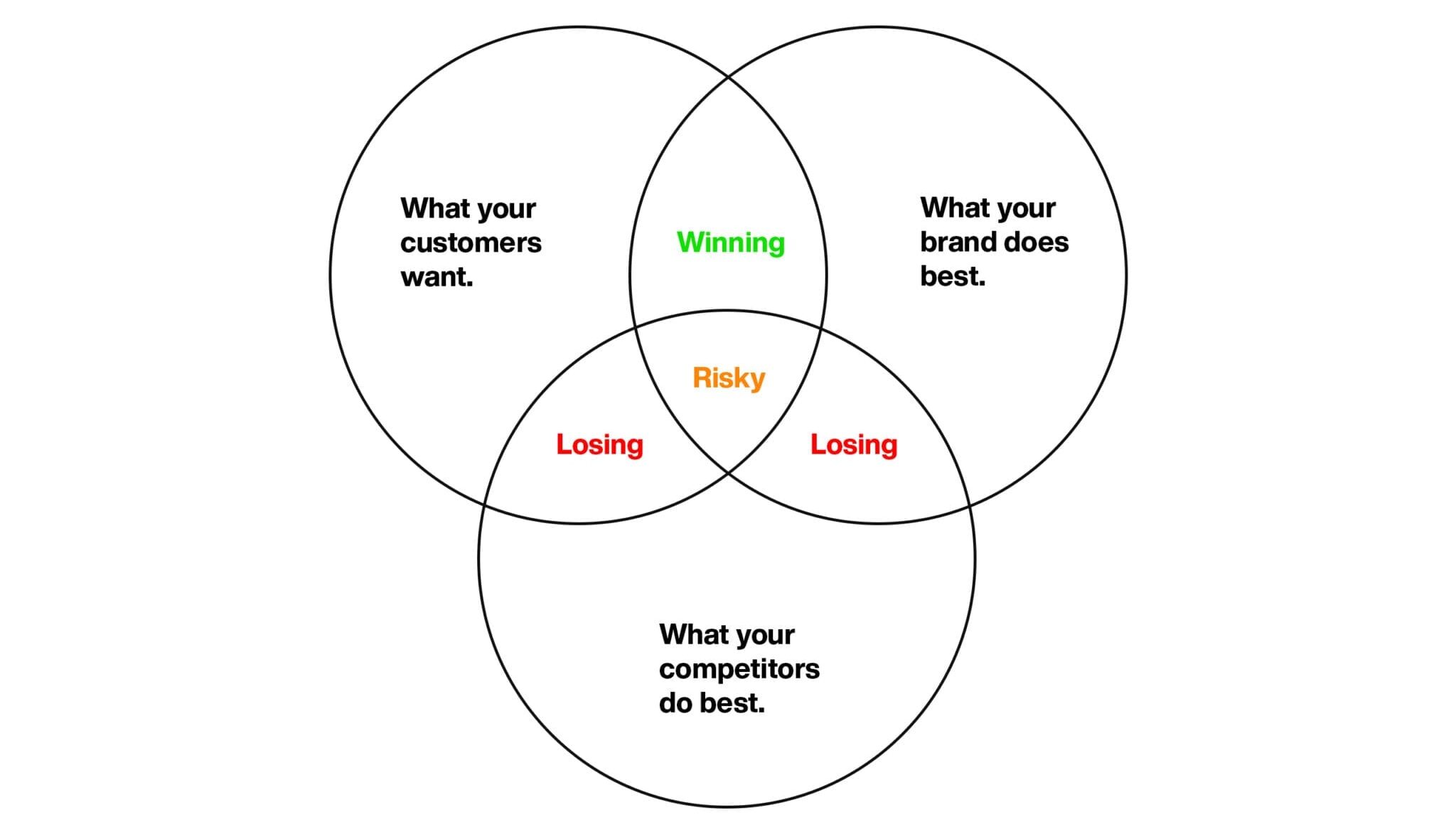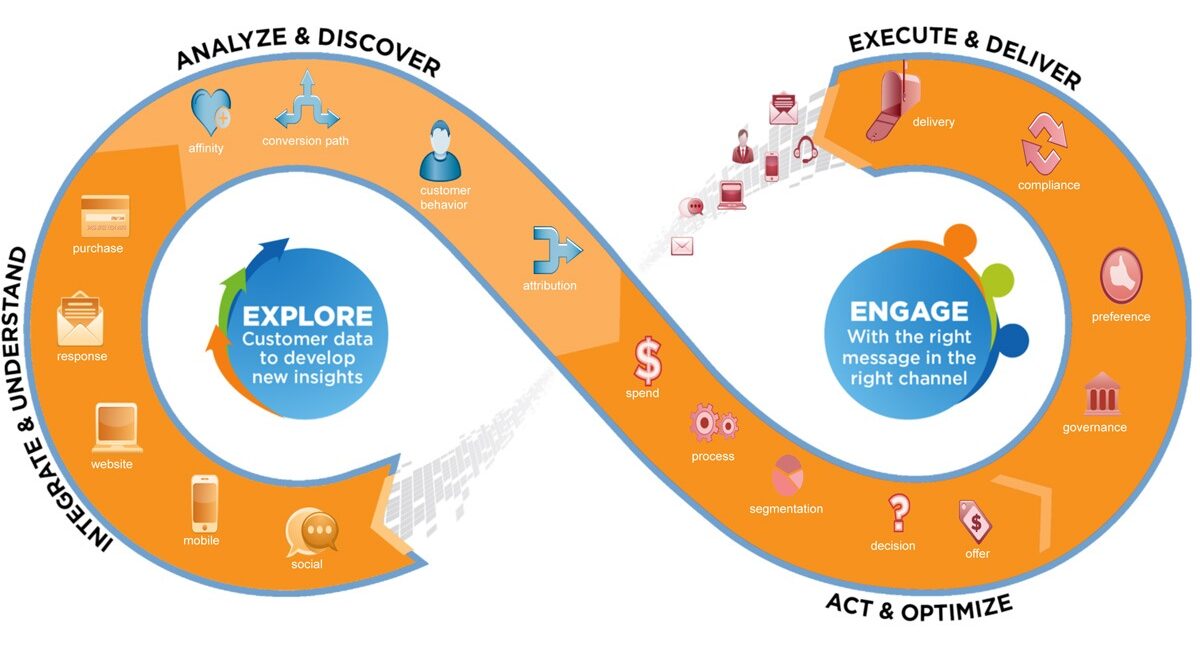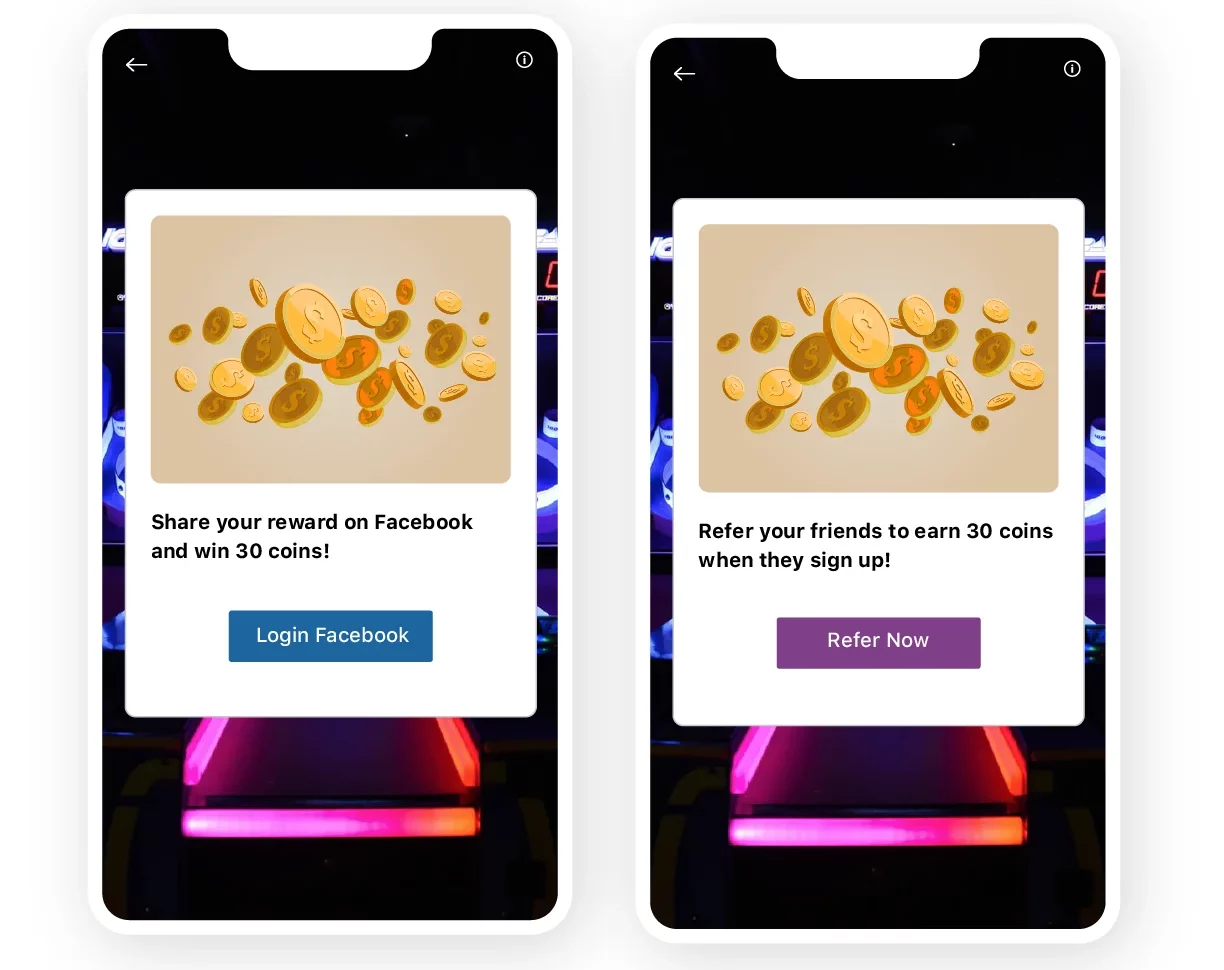This guide will cover the best performance marketing strategies and detail the key performance metrics, the importance of campaign marketing strategies, and the best practices.
Performance marketing is results-driven advertising in which the advertiser only pays a platform for achieved results, such as clicks or conversions. This marketing concept ensures a more efficient mobile campaign without wasting budget or resources.
Featured Performance Marketing Agencies
Performance marketing enables marketers to monitor their mobile ad spend and reassign it as required. Mobile marketers pay only for results and can track their performance with various tools, including advanced analytics. With performance marketing, mobile digital campaigns are measurable, and app installs and conversions count–the concept flips the traditional marketing model on its head.
Maximize Your Online Potential
Boost results instantly.
Elevate your strategy.
Reach new heights with Moburst.
Performance marketing strategies help marketers and app owners get the most out of their performance marketing and include strategies such as affiliate marketing, retargeting tactics, social media, influencer marketing, and data-driven advertising.
As the mobile app market continues to grow, understanding the key performance marketing strategies is critical. This piece should give you a clearer understanding of the key strategies and how they work.
Defining performance marketing
Performance marketing is a results-driven advertising concept first and foremost. The two primary types of performance marketing are found in the digital marketing and affiliate marketing fields. They are defined like so:
- Digital marketing – The term digital marketing refers to a type of marketing in which a business promotes its products via various online channels. There are multiple forms of mobile digital marketing, including native advertising, the use of display ads, programmatic advertising, search engine and social media marketing.
- Affiliate marketing – The term affiliate marketing involves the promotion of other businesses’ products in exchange for a commission. It’s a process where publishers earn a commission typically through the use of affiliate links. Affiliate marketing firmly falls under the umbrella of digital advertising.
The use of both digital marketing and affiliate marketing is important in establishing a successful mobile app marketing strategy.
For digital marketing, knowledge of search engine optimization (SEO), social media, and analytics is key to success. Many different variables are involved in digital marketing, which makes it a difficult area to master, but one that mobile app owners must engage with to stand out.
Awareness and recognition of a brand have taken on increasing importance today, and digital marketing is an essential part of the process. On-page SEO, off-page SEO, and technical SEO are the three core subcategories of SEO.
For affiliate marketing, mobile marketers need to understand the target audience and the value of the products they’re promoting. The main function of affiliate marketing is to drive traffic and clients are influenced by the primary affiliate marketing models.
Bloggers and influencers are able to introduce a product to a new audience. Affiliate marketing does not generally add extra costs to the final price paid by the consumer, although this can vary.
Mobile affiliate network example

The primary goals of any digital marketing campaign are an increase in app installs and website visitors. In contrast, affiliate marketing has the potential for the accumulation of commissions from the sale of promoted products; this can be used to generate revenue which app owners can make use of for digital marketing.
Used together, these two forms of performance marketing will enable app marketers to reach new audiences, use mobile ad budgets more efficiently, and create a path to more meaningful and relevant advertising experiences.
Key performance marketing metrics
Quantifiable mobile performance marketing metrics are used to monitor progress in achieving business objectives. These are measurable results and include the tracking of clicks, leads, sales, and app installs.
Measuring a mobile app’s success via downloads and ratings was the initial form of measurement, but today mobile performance marketing metrics allow marketers to see campaign success and failure in more detailed and helpful ways in which they can take action as and when required.
This is the digital marketing format in which brands only pay when there are clear and measurable results. For example, when a user clicks or installs your mobile app. These results can include direct sales and qualified leads. We examine the main performance marketing metrics below.
Clicks
Almost all mobile ad networks offer post-click measurement with the ability to track app installs and measure conversions post-click on mobile sites; this includes the ability to measure the success of click-to-video campaigns.
Post-click conversion tracking for mobile sites allows marketers to specify and track predefined actions that are performed by a user once they have arrived at a mobile site. This level of ongoing transparency provides mobile marketers with the performance visibility they need to see how their ads are performing.
The option to do this in real time and optimize mobile campaigns as they run is key to maximizing the volumes of high-performing clicks. The desire to measure mobile campaigns with the same transparency as you would find in online campaigns has resulted in the same standards making their way to mobile advertising.
Leads
It’s important for businesses to attract more leads and generate more conversions and (ultimately) revenue. Leads generated are the number of prospective customers identified during a specific mobile ad campaign; simply, they are any individual within your marketing reach who has interacted with your brand or has the potential to become a future customer at some point.
A lead can be someone that sees or downloads your app, signs up for a trial, or visits your mobile site. Effectively it’s the process of stimulating the interest of potential mobile customers and then converting them into buyers.
Businesses can use multiple online channels to stimulate interest, including the following:
- Search engine optimization (SEO)
- Landing pages
- Social media
- Online PR
- Search engine advertising
- Banner advertising
Mobile CPA affiliate network example

Trade shows and conferences are effective tools for lead generation, as is affiliate marketing. Participants in affiliate programs often receive a commission per lead; a fee per prospective contact.
Sales
Marketing itself builds awareness and then attracts leads to your mobile business; sales are where you convert those leads into paying customers. The sales process involves, in a traditional context, salespeople contacting leads who fit the customer profile.
If you target your mobile marketing efforts at those making purchases on mobile devices, you can significantly increase your overall sales. The aim of having a mobile sales strategy is to lay out guidelines and objectives in order to maximize sales–it also ensures a sales force is on the same page.
An effective mobile sales strategy involves prospecting, qualifying leads, and creating messaging that shows potential customers the value of your mobile product or service. Whether you’re a large, medium, or small business, you need the majority of your mobile customers to be satisfied. A sales team that is good at building long-term relationships will create the groundwork for continual mobile growth.
Following up with customers in order to ensure they’re satisfied with mobile purchases is a key part of a successful sales strategy.
App installs
App installs are the measurement of how many people install your app within a specific time frame. It’s defined as new users that open the app for the first time. Knowing how many app installs are completed during a set time frame (and where these installs are coming from) is an important part of your mobile app marketing strategy.
For example, sources that bring in app installs have proven themselves and you can continue to use them for wider growth. Fewer app installs from other sources will indicate a need for improvement or a change in marketing strategy. Around 2% of app installs lead to purchases.
Tracking installs also includes tracking uninstalls. When mobile marketers experience more uninstalls than installs, they will need to go back to their mobile app and determine the cause for customers leaving. The use of focus groups and surveys are some useful ways to find out directly from a target audience what may have been the issue. App installs additionally break down into the following:
- Install rate: The percentage of app installs that occur from the total number of clicks.
- Assist rate: The percentage of assisted app installs that occur from the total number of clicks.
- Install contribution rate: The percentage of install contributions that occur from the total number of clicks.
App install rate formula
Source: Theonlineadvertisingguide.com
Mobile marketers need to determine which channel (and marketing campaign) converted an app install. The assisted install metric makes it possible for app owners to measure the performance of primary channels, mobile campaigns, and advertising partners whose focus centres on promotion.
Importance of campaign marketing strategies
When marketers set out to create a mobile marketing strategy, it’s important they implement business objectives and goals that they can target. Mobile marketers will need to think about brand positioning, essential for all businesses striving for success, their mobile performance targets, and they will need to be able to measure and optimize their mobile campaigns accordingly. We examine the importance of each below.
Brand positioning
Brand positioning is how consumers identify and connect with your brand overall. Mobile marketers, and their brand positioning, should adapt and evolve as the mobile digital world continues to change. Mobile brand positioning breaks down into three central parts. They are as follows:
- What the mobile business represents in the mind of customers
- What the mobile business’s capabilities are
- How the mobile business differentiates itself from competitors
To ascertain the correct brand positioning, app owners need to identify who their ideal customer is and what market niche they are trying to target. Successful mobile marketers focus on their target market and optimize their digital marketing efforts with continually updated mobile strategies.
For example, if a customer downloaded an app, mobile marketers need to find out what made them do so. Knowing what attracted a mobile customer and what made them convert (and then install an app) is integral to developing further leads and conversions.
A mobile brand positioning strategy, ergo, involves creating associations in mobile customers’ minds to make them perceive the brand in a certain way. Mobile brand positioning strategies are linked to customer loyalty and effective brand positioning can be referred to as the extent to which a brand is perceived as favourable, unique, and credible.
In other words, a mobile brand that will resonate with customers, can be delivered via the mobile businesses’ capabilities and one that is different from competitors. Mobile marketers will need to identify and eliminate the non-value-added activities existing in marketing activities and continue to improve the marketing system, Zhou, Y. (2019).
Areas to focus on include the following:
- The product
- Name
- Visual identity
- Communication strategy
- Price
When a mobile position changes its positioning strategy, it is known as repositioning; the need for a new positioning strategy can occur for multiple reasons, including a change in mobile customer desires, new entrants, or further changes in technology.
Brand positioning basics example

After doing research and deciding on a mobile positioning strategy, it is important for app owners to communicate with any stakeholders internally and work with additional marketing teams to create messaging accordingly. The use of performance marketing naturally facilitates this.
Performance targets and business objectives
Performance marketing objectives are goals that mobile businesses define to help achieve their goals. Performance goal-setting is a key step that helps businesses achieve desired outcomes. Implementing successful mobile projects and being willing to share ideas for new initiatives is critical, as is generating resilience when challenges arise. Some common mobile business objectives include the following:
- Product Quality
- Speed
- Dependability
- Flexibility
- Cost
Mobile customers look for high-quality mobile apps and it’s one of the primary attributes that makes them value what your business offers. A mobile business offering needs to meet the standards and expectations of customers; by focusing on quality, mobile marketers are better able to satisfy customers and boost growth.
Being reliable and trusted by your customers, in other words, that said product or service will be delivered as promised, is a key part of satisfying mobile customers in the long term.
Mobile customers may choose one app over another simply because of cost; therefore, minimising overall costs and optimising your operations will help customers trust mobile businesses to deliver dependable and quality products.
Mobile apps need to be delivered at speed while maintaining an overall high quality; this factor alone can determine a mobile business and its ongoing reputation in the eyes of customers. Performance marketing can help to realise business objectives.
Measure and optimize campaigns
Having the ability to measure and optimize a mobile marketing campaign is how app owners will ultimately determine what’s working and what isn’t; it’s foundational to overall success. Mobile analytics inform marketers how their customers interact with their mobile products.
As a results-driven advertising concept, performance marketing naturally excels in this area as payment depends on how users interact with your mobile app. Mobile brands only pay when there are measurable results and when campaign objectives are achieved. For example, when a user clicks or installs the mobile app in question.
Key areas that help mobile marketers measure and optimize their mobile campaigns include the following:
- The fine-tuning of KPIs
- The visualisation of data
- The use of segmentation and funnels
- The use of A/B testing
This is most successful when mobile marketers can track all of their marketing data in a single location, making it easy to extract and track key metrics for a faster assessment of their overall mobile marketing strategy. The use of performance marketing enables mobile marketers to optimize and improve their marketing campaigns without having to hire a full data analytics team.
Mobile marketers can make use of A/B testing where they create versions of an ad that are slightly different and test them against each other; this can help them refine their messaging or change their target audiences.
A/B testing example
Source: VWO.com
A/B testing, or split tests, answer the question: do your users like version A or version B better? The overall marketing concept shares similarities with the scientific method. Measuring results along the way will give mobile marketers a better understanding of what they’re doing well and what they need to improve.
Performance marketing strategies
Performance marketing strategies can benefit mobile businesses as they provide them with the opportunity to focus their marketing efforts and refine their strategy, which improves the chances of overall success. With a goal in mind, mobile marketers can set their brand position and create targeted ads that are more likely to resonate with their chosen audience.
There are a number of performance marketing strategies that mobile marketers can employ. We examine the main performance marketing strategies below.
Cost per acquisition
Cost per acquisition (known as CPA) measures the total cost of a customer completing a certain action. CPA will give a good indication of how much it costs to get a customer down a sales funnel and to the ultimate conversion. The action can be defined as a click, purchase, lead, and a number of other options; this will ultimately depend on a mobile marketer’s goals.
To calculate the cost per acquisition, app owners need to divide their campaign spend by the number of customers acquired via that campaign. The CPA formula can be broken down as follows:
- CPA = Campaign cost / Conversions
Mobile marketers can measure if their CPA is successful against their own data. CPA is critically important because mobile marketers can track how effective their ad campaigns have been. For example, if a CPA is higher than expected, this is an indicator that the strategy may need to be revised.
Cost per sale
The cost per sale (known as CPS) and other times pay per sale, determines the amount of money paid for every sale generated by a certain advertisement. Understanding and tracking CPS allows mobile marketers to take steps to reduce their campaign costs and optimise overall productivity.
The total cost of the mobile campaign is divided by the sum of sales:
- CPS = Total cost / Sum of sales
While calculating the CPS, all aspects of the mobile campaign are taken into consideration, including the following:
- Lead-to-prospect conversion
- Prospect-to-customer conversion
- Web-based marketing
- Customer service
- Commission
The cost per acquisition is frequently used with CPS to measure the results of mobile marketing campaigns. Measured together, CPA and CPS can provide an accurate idea of how successful a mobile campaign has been overall.
Cost per impression
Cost per impression also called cost per mille (known as CPM), allows mobile marketers to calculate the amount of money needed for 1,000 impressions. Impression stands for an ad view.
The formula for calculating CPM is as follows:
- CPM = Total ad spend / Number of ad impressions *1000
App owners will need to divide their campaign costs by the number of ad views and then multiply by 1000. CPM is a valuable strategy for mobile marketers as it helps them to understand the efficiency of promotional channels and analyze each publisher before placing ads.
In cases where advertisers run ad campaigns based on multiple business models at once–CPI, CPL, CPM, CPC–another benchmark becomes handy: eCPM. To calculate the eCPM, the following formula is needed:
eCPM formula example
Source: MarketingTerms.com
Cost per click
The cost per click (known as CPC) is the amount paid every time a mobile user clicks on an ad; with a typical cost-per-click campaign, a certain number of clicks are promised, and the CPC is paid out for each click delivered.
The formula for calculating CPC is as follows:
- Average CPC = Total cost of clicks / Total number of clicks
Using CPC allows mobile marketers to attract more customers by paying publishers to display ads their target audience is likely to visit. If the CPC is disappointing for certain ad types, app owners can shift their budget to ad types that generate higher revenue. Mobile marketers can automate their bidding strategies to allow them to focus elsewhere.
Cost per lead
Cost per lead (known as CPL) is defined as the amount of money mobile marketers spend to generate a single new lead for their business. The strategy is used to measure and monitor the effectiveness of mobile marketing campaigns and is a good indicator of what’s working and what’s not.
Calculating cost per lead is performed by dividing the total amount of money spent on a campaign during a defined period by the number of leads acquired through that campaign, as follows:
- CPL = Total cost of the campaign / The number of leads generated
A higher CPL can sometimes result in a higher quality lead and a lower overall customer acquisition cost. The exact techniques for managing CPL will depend on the different channels employed. If the CPL rate is higher than average, mobile marketers may need to optimize their strategy.
Affiliate marketing
The term affiliate marketing involves the promotion of other businesses’ products in exchange for a commission. In affiliate marketing, mobile businesses collaborate with third-party partners to create leads, sell products, and earn a profit; this approach falls under the category of performance marketing, in which mobile affiliate marketers are paid after the business’s objectives are fulfilled.
Affiliate marketing has evolved so that the mobile affiliate typically gets paid for sales or mobile app downloads. With performance marketing, the mobile affiliate needs to follow the set standards and provide measurable business results from the campaign to complete the conversion and receive the ultimate commission.
Performance marketing has reversed the traditional value proposition of advertising because it allows for the real-time measurement of ROI.
Retargeting tactics
Mobile retargeting is a tactic that boosts overall brand awareness. Mobile retargeting is where marketers reach out to prospects for a second chance; this can be to improve awareness, loyalty, conversions, and lifetime value.
Examples of mobile retargeting include the following:
- Serving a social media ad to someone who visited a website but didn’t download the app
- Sending out a push notification coupon after a person downloads an app
- Running holiday text campaigns to reactivate people who purchased through a site only once
- Advertising loyalty program reward opportunities to boost engagement
Mobile retargeting gives marketers the chance to reconnect with their customers and prospects and can be used to engage and build customer loyalty, improve sales and reduce cart abandonment, drive in-app conversions, and increase advertising efficiency.
Mobile app retargeting network example

Social media marketing and influencer marketing
Mobile marketers can include influencer marketing and social media marketing as part of their performance marketing strategies; doing so will help them to monitor engagement rates and receive better value from their mobile budget.
Conducting a social media audit will help mobile marketers to locate the right influencers for them. Mobile marketers will need to look beyond the number of followers to see whether the influencers themselves will have an impact on audience behaviors and will be well suited.
This form of performance marketing employs the use of social media networks to ultimately gain traffic and brand awareness. Using various ad formats (and targeting options), mobile marketers can reach new customers while measuring KPIs such as engagement, clickthrough rate (CTR), and ROI. These mobile campaigns are set up with a basic funnel structure.
Data-driven advertising
Data-driven advertising is where mobile marketers analyze their performance data to see what’s working and what isn’t; they can learn from results to adjust their overall approach. This strategy relies on performance data to improve how they market a mobile product or service. It’s possible to be data-driven across almost every mobile channel, including social media, content marketing, and SEO; 36% of marketers said data is essential for reaching target audiences.
Data-driven advertising example

Mobile marketers can employ strategic marketing data analysis in their process and can then begin to make more informed decisions. This helps them gain a much deeper understanding of their target audiences and (ultimately) how to reach them.
Mobile marketers don’t need big data for data-driven marketing; in fact, even with a small budget or no paid advertising at all, merely analyzing the data they already have can be highly effective.
Performance marketing best practices — final thoughts
To recap, performance marketing is a low-risk marketing strategy for mobile marketers and it allows for a high ROI. It’s simple and cost-effective for marketers to track their efforts and expose their business to a wider audience.
Performance marketing allows marketers to monitor their ad spend and reassign it as required (and crucially) only pay for results. Using this form of marketing allows them to track their performance with various tools, including advanced analytics, and mobile digital campaigns are measurable.
It’s critical that mobile marketers start by defining their goals and outline what they hope to achieve through performance marketing. Successful performance marketing ensures they’re reaching their target audience via a data-driven approach that can be optimized over time. Overall, the results of their advertising can be tested and optimized with A/B testing, and they can leverage new and different forms of targeting for the best results.




